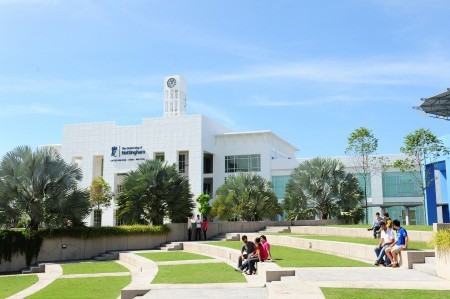A gold rush? Far from it.
Inside Higher Ed recently ran a piece on the growth of branch campuses detailing a presentation by Anna Kosmützky, a sociologist at the University of Kassel.
In the presentation Kosmützky draws on the most recent OBHE data (now several years out of date) on the number of branch campuses and focuses strongly on the Dubai International Academic City model which, although it includes many participating universities, really isn’t quite a full and discrete branch campus as many would define it. She also offers a rather narrow view of branch campuses in terms of activities (i.e. suggesting all are exclusively teaching focused) and discipline areas covered.

Kosmützky noted that the total number of international branch campuses — estimated at 200 — remains small. But she described the creation of branch campuses as having become “a legitimized strategy independent from the outcome of the strategy. Universities strive for establishing an international branch even when the environment is highly competitive and the strategy seems inappropriate because there are so many competitors that offer the same programs.”
She argued that “branch campuses appear where a red carpet is laid out for them” by the local government. And where there is no red carpet — as has been the case in Africa — universities wanting to engage will resort to more traditional forms of establishing an international presence, such as joint programs or student and faculty exchange.
The proposition that there is a strong pull factor here is a reasonable one, And some countries, such as the UAE, Singapore and Malaysia have undoubtedly been at the forefront of presenting themselves as education ‘hubs’ (although it is not always clear what defines a hub as this earlier post notes). But is it really all about the money?
“These hubs, these conducive environments, create waves of founding and at the same time competition and the [dying] out of branch campuses that does not affect the population overall,” said Kosmützky, who concluded that new waves of foundings could occur as new educational hubs continue to emerge.
“To utilize a metaphor, I would compare the whole branch campus story with the California gold rush,” she said. “People from all over the world went to California to dig for gold. Some got rich and many returned home with a little less than when they left.”
It really isn’t a gold rush though. Far from it. As this post last year noted in describing the University of Nottingham’s experience in China and Malaysia:
Establishing an overseas campus is not straightforward. Challenges range from building the infrastructure to restructuring institutional and local governance. Legal issues, financial arrangements and developing local management can take time and significant effort, as can coming to terms with an entirely new academic, political and cultural framework.
We have built close relationships based on trust and taken the long-term view with our partners. Major new opportunities in teaching, student exchanges and research collaboration have hugely enriched Nottingham’s environment and ethos; our campuses in Asia confer great benefits in terms of the student experience, and this can be equally transformative for students from the UK who spend time studying in China and Malaysia.

University of Nottingham Malaysia Campus
To leverage the full benefit of an international campus, though, an institution must have a strategy that goes beyond thinking about money. The management input required is high, and there are inevitably opportunity costs.
The investment is substantial, but it is worth it for a university committed to an international vision that goes beyond generating income from overseas student fees. Such a global footprint therefore has real impact for the institution, its students, staff and stakeholders as well as for the governments and society at home and in the countries with which it is deeply engaged. This real and comprehensive international impact though is therefore about much more than just the money.
So, branch campuses are not the new California gold rush. Going into such a development to make money is fundamentally the wrong approach.











